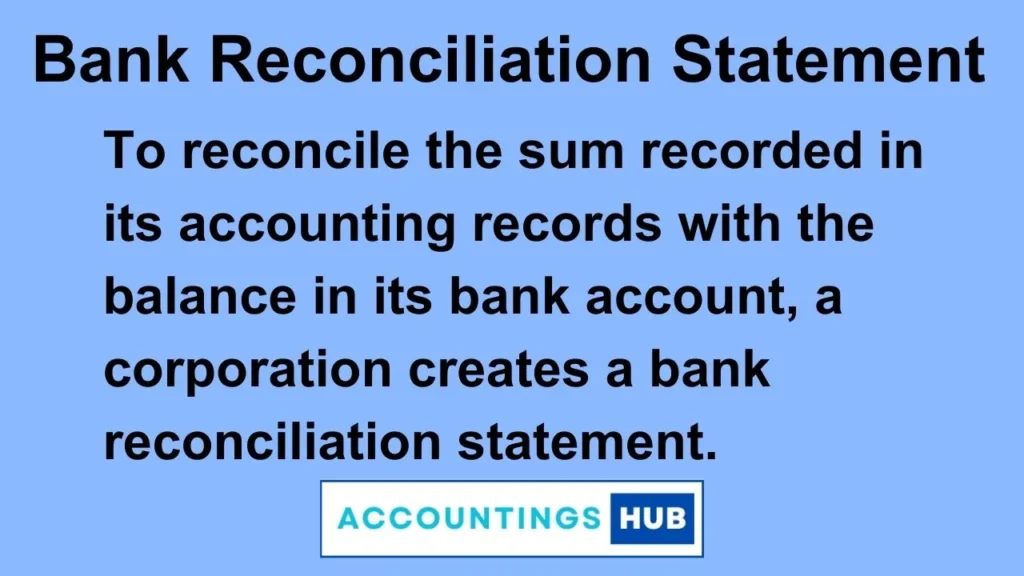To reconcile the sum recorded in its accounting records with the balance in its bank account, a corporation creates a bank reconciliation statement. The statement describes the reasons for any differences between the two. A bank reconciliation statement is an important internal tool that has an effect on tax and financial reporting and can be used to detect errors and deliberate fraud.

Understanding Bank Reconciliation Statement:
The process of reconciling involves comparing two different records. You might find discrepancies between the bank and book balances for your business by consulting a bank reconciliation statement.
The deposits, withdrawals, and other transactions that affected a bank account over the specified period are included in this reconciliation. Any differences result in the necessary modifications or repairs being made. Here are some more uses for a bank reconciliation statement.
Identifying Accounting Errors
bank reconciliation statement confirms that cash receipts have been deposited into the bank and that payments were handled. Simple mistakes, duplicate entries, and unintentional inconsistencies are frequently found using bank reconciliation statements. Some errors could harm tax and financial reporting. Without reconciling, businesses may pay either too high or too low taxes.2
Detecting Fraud
Bank reconciliation statements are useful instruments for finding loss, theft, and fraud. An altered check, for instance, will result in a greater payment than you had anticipated. When you reconcile your bank accounts and identify this, you can take action to stop the fraud and get your money back.
Managing Risk
Financial statements reflect the state of a business or other entity at a particular point in time. Investors can make informed decisions from accurate financial statements. The financial statements provide organizations with crystal-clear views of their cash flows, which may help in organizational planning and are critical business choices.
Frequently Asked Questions
What is a bank reconciliation statement and who prepares it?
The Department of Accounts Payable is in charge of bank reconciliation accounting. It is a method of identifying any discrepancies, errors, cash manipulations, or fraudulent transactions by comparing bank statements to a company’s records.
What are the 4 steps in the bank reconciliation?
The bank reconciliation process consists of the following four steps:
- Check the deposits.
- Bank statements should be adjusted.
- Adjust the cash account.
- Verify the balances.
Why Is Bank Reconciliation Important?
The process of bank reconciliation makes it easier to detect mistakes that may have an impact on financial reporting and tax payments. Detecting fraud and putting an end to it is also made easier.
What is the main purpose of BRS?
BRS is created regularly to ensure that bank-related transactions are accurately recorded in the bank column of the cash book and the bank’s books. BRS helps in finding inaccuracies in transaction recording and calculating the precise bank balance as of a given date.
